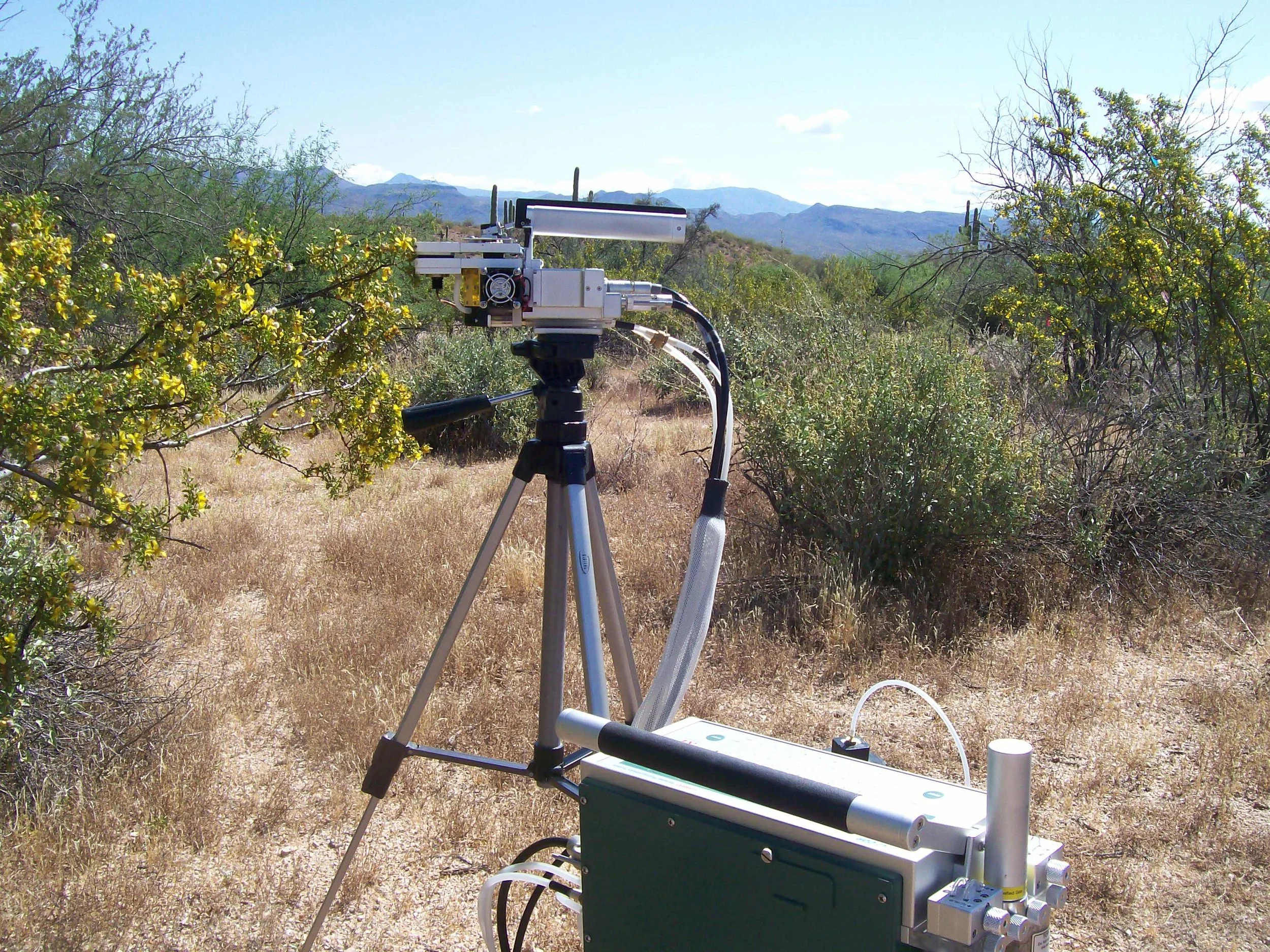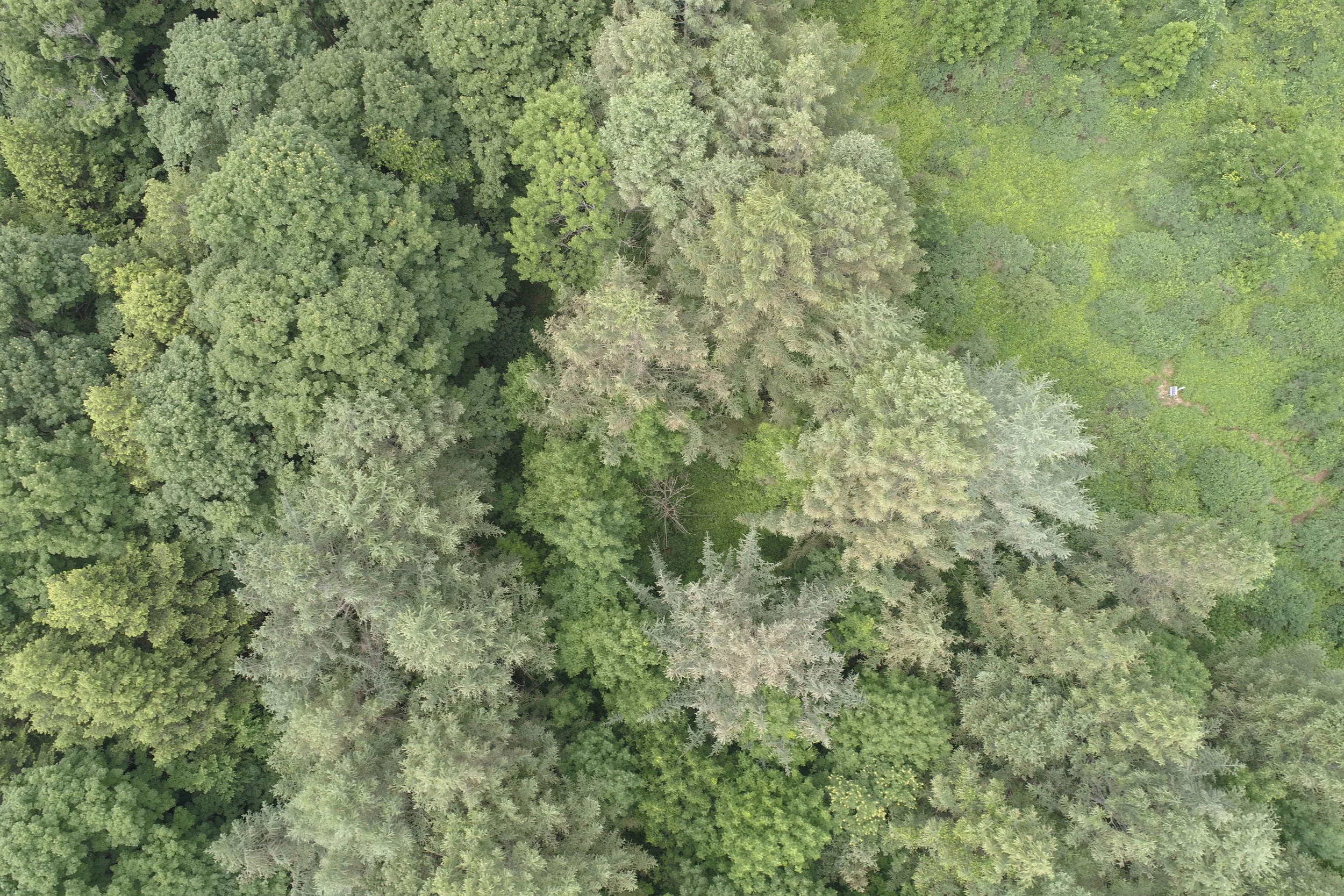Plant water relations
Soil conditions and precipitation limit the amount of water plants use from the soil which subsequently limits the carbon dioxide that plants take in for photosynthesis. I study how much water plants use and ask questions about why they use a particular amount of water at that point in time.
In a boreal forest near where trees stop growing in the Russian Arctic, I found that the only tree species, larch, can quickly show signs of water stress under slight increases in atmospheric dryness. Most water held in the soil is not available for larch to use due to cold soils from underlying permafrost. High density larch forests that regenerate after severe wildfire use more water than low density forests that regenerate from less severe fires. However, water use in the high density forests responds negatively to increases in air temperature and relies on wetter conditions for longer periods in the past. My research shows that increasing fire severity concurrent with increasing air temperature under climate change may ultimately mean lower plant water use and carbon dioxide intake in these larch forests.
In the Sonoran Desert, I found that a common shrub, creosotebush, used less water in the presence of neighboring plants. Competition dominated the influence of neighbors on creosotebush plant water use, even with trees that are thought to be facilitative to other plants. Creosotebush had altered active root distributions and the stomatal controls on transpiration that depended on the functional type of the neighboring species.
Plant-climate interactions
Plants can alter the environment around them (microclimate), and these changes may affect plant water use as well as overall meteorological conditions in an ecosystem. I quantify patterns between plant characteristics and the key meteorological variables to understand the plant-climate interactions.
Plants can influence soil temperature through multiple mechanisms such as canopy shading, changing the distribution of snow across the ecosystem, and the movement of heat throughout the soil via influences on soil moisture. I synthesized data from 235 sites across the Arctic and sub-Arctic to better quantify the impacts of vegetation on soil temperature. I found that canopy stature had the greatest impact on soil temperature, and the insulating effect of vegetation canopies has the greatest influence on average soil temperature conditions. My findings also indicate that vegetation change occurring in tundra regions (tree-line and tall-shrub) may amplify soil warming under global climate change. Soil temperature is a key influence on permafrost stability and carbon cycling in the Arctic.
High latitude snow cover is an important driver in global climate as a result of the decreased absorption of shortwave radiation at the ground surface. Trees influence spring snowmelt timing through the enhancement of longwave radiation at the snow surface as a result of dark trunks and stems. I paired remotely sensed snow water equivalent and vegetation data, I found that canopy cover plays a significant role in melt timing in boreal forests. The northerly advance of treelines under global climate change may exacerbate air temperature increases due to altered snow melt dynamics.
Quantitative ecology
My research relies on a range of data types from measurements on individual leaves to global remotely sensed observations of climate and vegetation. Working with variable and often large spatial and temporal datasets motivated me to think about data beyond a means to building scientific theory. I am interested in data management, analysis, and life cycles with an emphasis on accessibility and reproducibility in science. As I adapt emerging technologies to my research, such as with drones, I am interested in creating workflows and protocols that emphasize tractability and transparency in data collection.
I apply a quantitative approach to answering questions that uses statistical models to represent ecosystem phenomena, typically in a Bayesian framework. These models can unite diverse datasets to quantify latent ecosystem processes and uncertainty associated with measurements and natural variability. I also adapt computing tools and high performance computing techniques to my large data analyses.
Drones in ecology
Transpiration, plant characteristics, and soil conditions vary throughout space in ecosystems and may have very different values over meter scales. Understanding this variability can help elucidate plant-soil interactions, and it can also make a difference when we try to estimate how much plants transpire or rain infiltrates into the soil. Drones are providing tools for rapidly quantifying spatial variability in vegetation. I’m working with sensors such as thermal cameras to better understand spatial variability in plant water use. Since these tools are rapidly emerging, much of my research has focused on developing workflows and evaluating sources of error.












